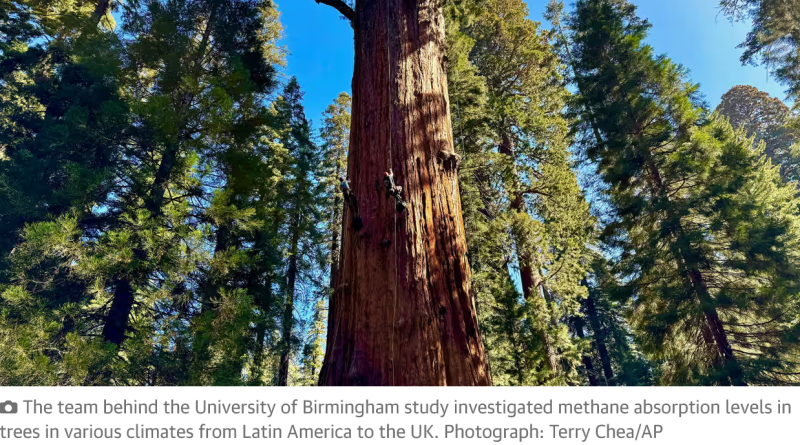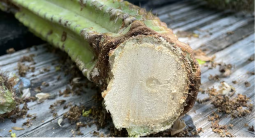Tree bark plays vital role in removing methane from atmosphere, study finds

Microbes in the bark of trees play a vital role in removing methane from the atmosphere, scientists have discovered.
The greenhouse gas is a product of agriculture and the burning of fossil fuels and is 28 times more potent than carbon dioxide. However, it remains in the atmosphere for a shorter time.
Methane has been responsible for about 30% of global heating since preindustrial times, with emissions currently rising at their fastest rate since the 1980s.
The team behind the study by the University of Birmingham, published in the journal Nature and led by Prof Vincent Gauci, investigated methane absorption levels in upland tropical forests in the Amazon and Panama; temperate broadleaf trees in Wytham Woods in Oxfordshire in the UK; and boreal coniferous forest trees in Sweden.
Methane absorption levels were found to be the highest in tropical forests, probably thanks to the microbes’ ability to thrive in warm and wet conditions.
Previously, soil was thought to be the only terrestrial sink for methane, with bacteria in the soil able to absorb the gas and break it down to use as an energy source. But Gauci said the research highlighted “a remarkable new way in which trees provide a vital climate service”.
The Global Methane Pledge, launched in 2021 at the Cop26 climate summit, outlined the aim to cut methane emissions by 30% by the end of the decade. Gauci said: “Our results suggest that planting more trees, and reducing deforestation surely must be important parts of any approach towards this goal.”
Tree planting has become a key tactic in combating the climate crisis, with the UK government planning to spend more than £500m on trees and woodlands between 2020 and 2025. But another piece of research published on Wednesday shows countries must weigh up the benefits and disadvantages of tree planting, with natural forest regeneration proving more cost-effective in some circumstances.
Jacob Bukoski, a scientist from the Oregon State University college of forestry, and his team analysed data from thousands of reforestation sites in 130 countries for the study, published in the journal Nature Climate Change. They found that natural regeneration would be most cost-effective over a 30-year period for 46% of the areas studied, while planting would be more cost-effective for 54%.
“Generally speaking, we can let forests regenerate on their own, which is slow but cheap, or take a more active approach and plant them, which speeds up growth but is more expensive,” said Bukoski. “Our study compares these two approaches across reforestable landscapes in low- and middle-income countries, identifying where naturally regenerating or planting forests is likely to make more sense.”
Natural regeneration was found to be more cost-effective in areas such as western Mexico, the Andean region, the southern cone of South America, west and central Africa, India, southern China, Malaysia and Indonesia.
A combination of factors made natural regeneration better in these areas, such as whether there were sufficient ecological conditions for tree regrowth, opportunity and implementation costs, and carbon accumulation rates.
Scientists ultimately determined that using a combination of both approaches globally would be 44% better than natural regeneration alone and 39% better than solely planting. “If your objective is to sequester carbon as quickly and as cheaply as possible, the best option is a mix of both naturally regenerating forests and planting forests,” Bukoski said.
While reforestation can prove highly effective in offsetting greenhouse gas emissions, the authors stress that reforestation is a complement to, not a replacement for, reducing emissions from fossil fuels. The entire mitigation potential of reforestation over 30 years would only equate to less than eight months of global greenhouse gas emissions.
The authors also argue that many other factors must be considered alongside carbon when deciding where and how to reforest landscapes, such as reforestation’s impact on biodiversity, demand for wood products and non-carbon biophysical effects such as water availability.





